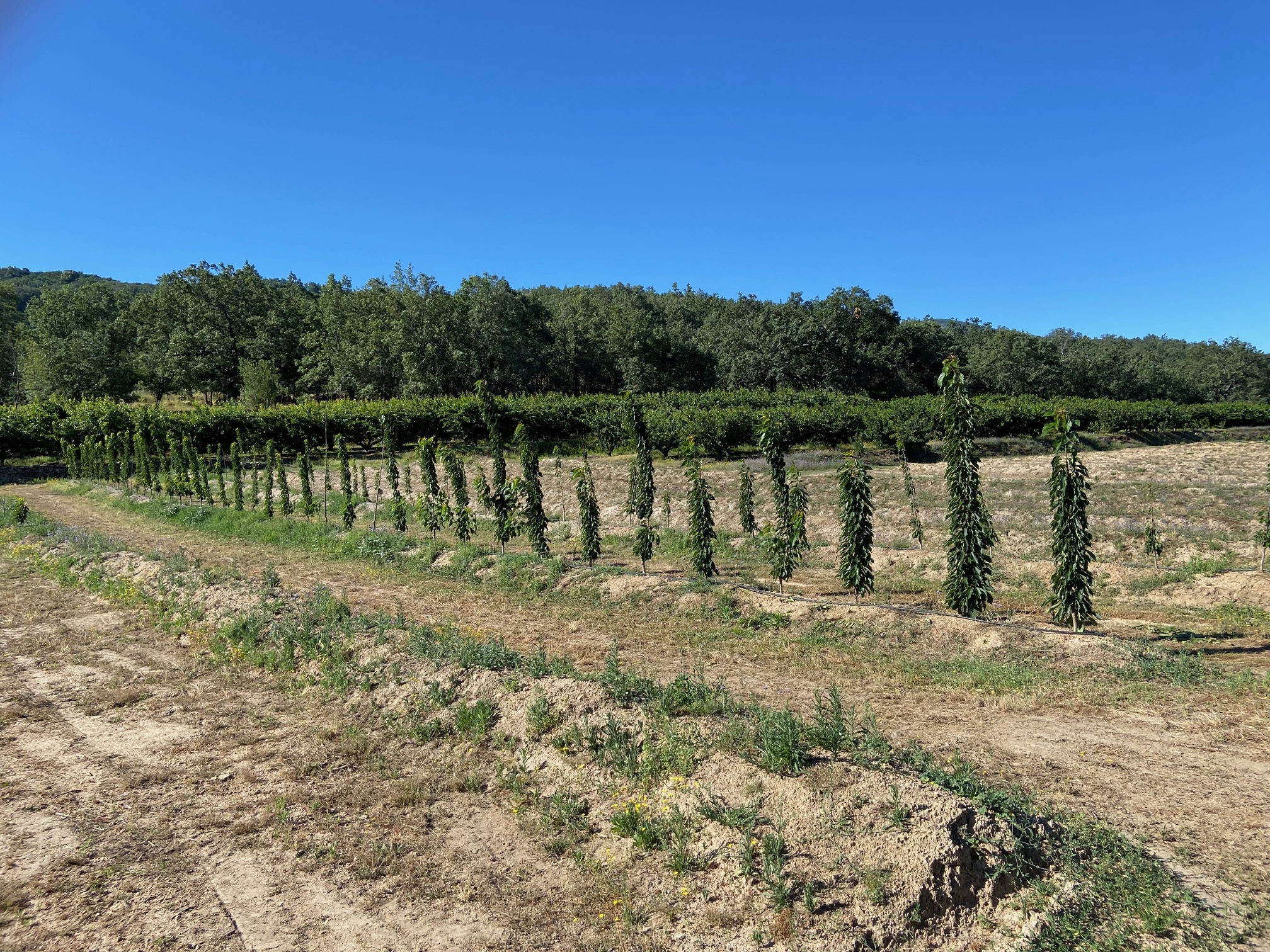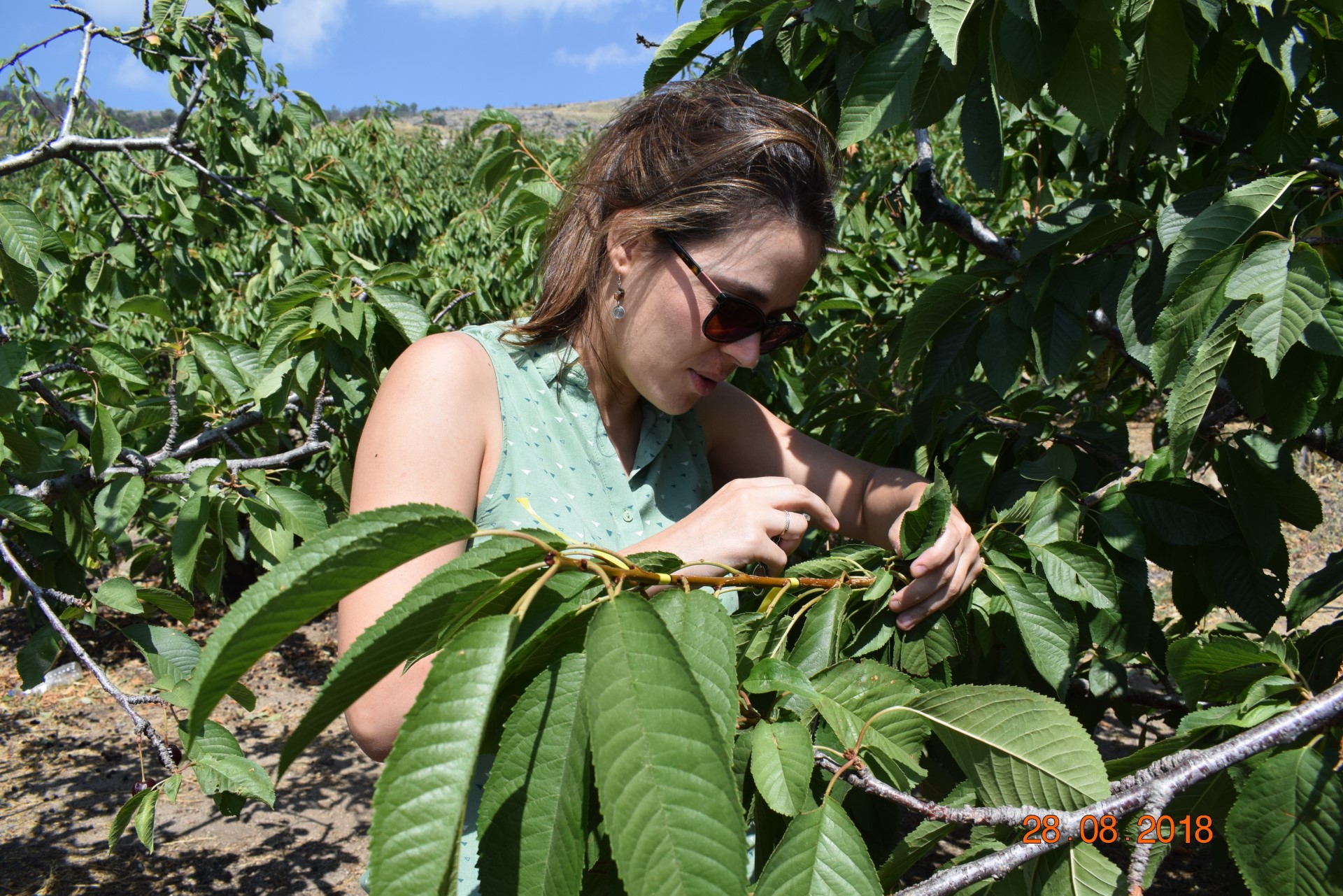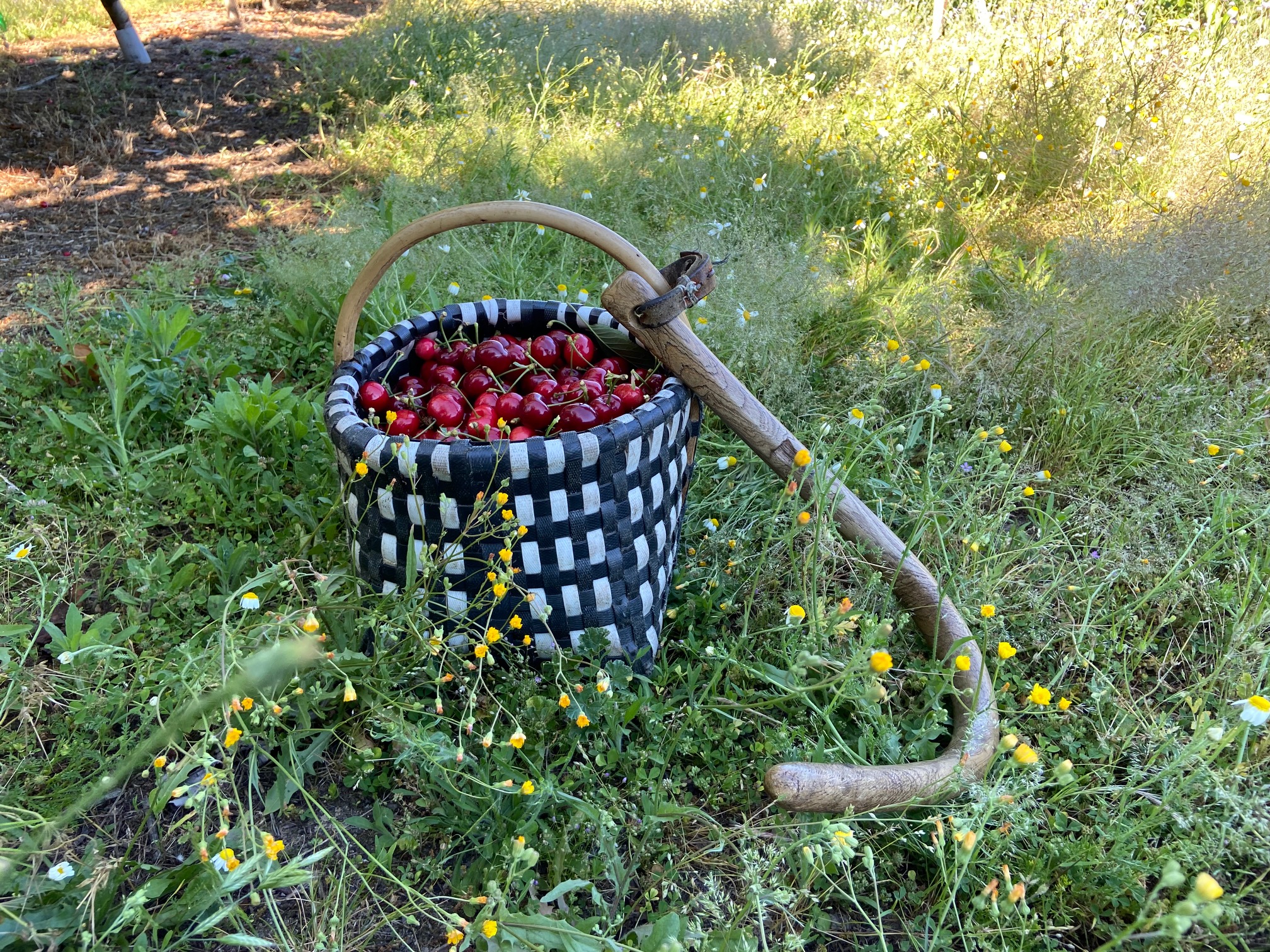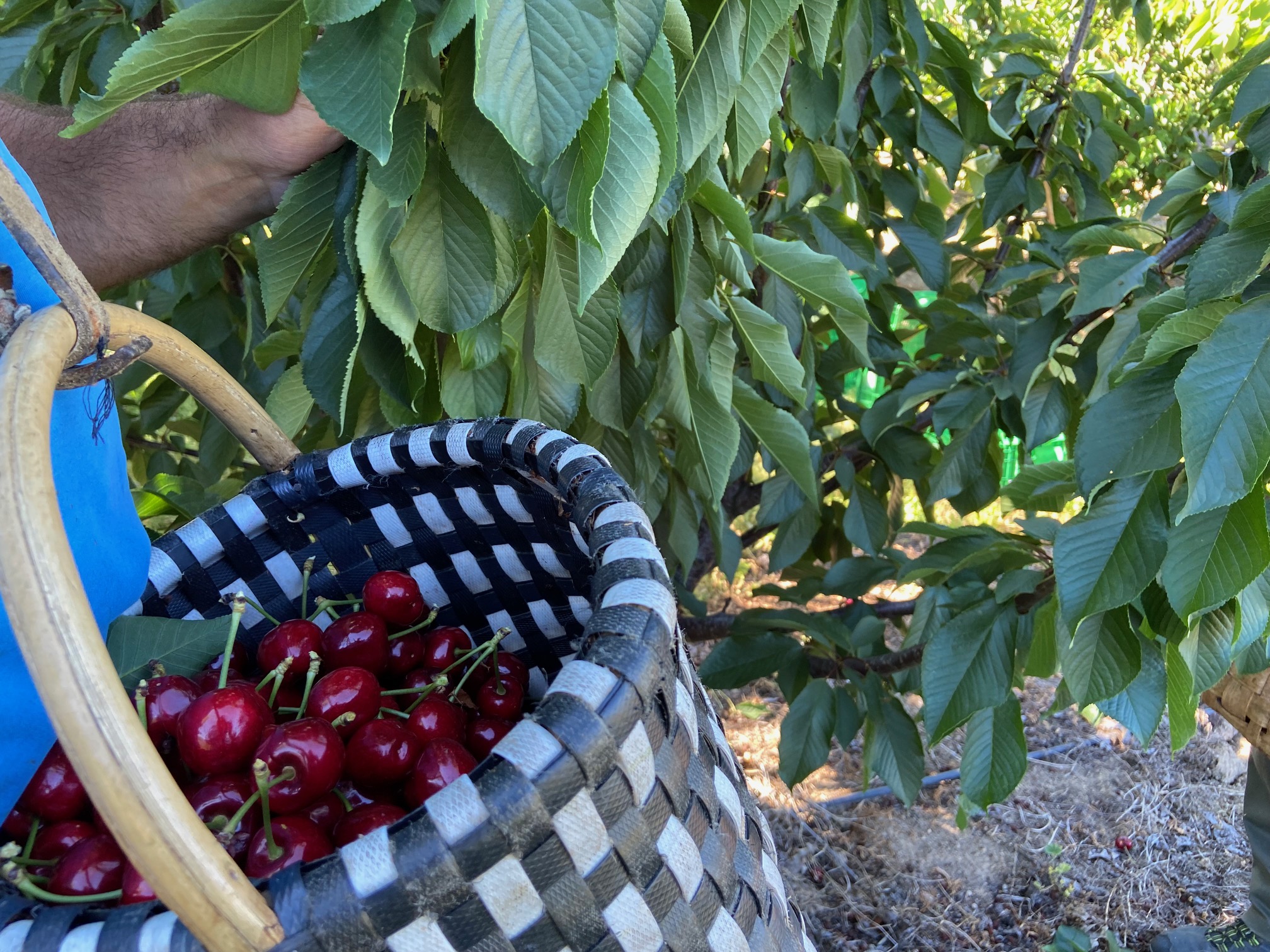
Cherry tree
 General information
General information
The growth of the sweet cherry (Prunus avium, L.) is a very traditional trade in the north of Extremadura with a high social and strategic impact in the area, as it represents one of its main sources of income. The cherry production system has traditionally been based on the production of rain fed crops in small family farms where, as well as the autochthonous varieties such as the Picota, a large number of other varieties of cherries with stem coming from various improvement programs are also grown.
 Crop needs
Crop needs
From a technical viewpoint, there are several issues that prevent the profitability and competitiveness of sweet cherry farming in the north of Extremadura. These issues specifically relate to the use of adequate plant material, the introduction of irrigation in the plots and the selection of the adequate tree shaping system in order to adapt it to market demand and reduce the production costs. On the other hand, it is necessary to adequately manage irrigation and fertilisation, as well as fruit harvesting practices and, in the case of fruit and vegetable centres, also the improvement of the quality and the useful life of cherries, in order to guarantee their suitability to reach the national and international markets in optimal conditions.
In this respect, there are several lines of research being promoted by several work groups at CICYTEX in cooperation with other public bodies and the University of Extremadura. Various testing and study programs are being developed with a focus on characterising plant material (varieties and patterns), growing techniques (pruning, tree shaping systems, irrigation strategies and fertilisation) and the general quality and useful life of cherries, as well as the identification and determination of the nutritional and functional compounds of cherries.
 Genetic improvement program
Genetic improvement program
On top of the above, we have added a genetic improvement program that is being developed in conjunction with the Group of Cooperative Associations of Valle del Jerte and the Cooperative Association of Campo de Navaconcejo, with the purpose of selecting the quality features of the fruit and obtaining new varieties that can adapt to the land with enhanced productivity and characteristics associated with quality parameters (size, flavour, colour, firmness…), as well as overcoming issues such as cherry cracking.
 Calculation of the water needs
Calculation of the water needs
As mentioned, this crop has been traditionally developed in dry farming conditions, as the area usually receives abundant rainfall. However, in recent years, irrigation has initially been introduced as a way of supporting production, due to the increase in the temperatures, the modernisation process and variety reconversion. The projects developed at CICYTEX focus on actual irrigation needs and the development of irrigation strategies in the north of the Caceres province that may allow for a profitable production to be obtained, an efficient use of the resources and an adaptation to the effects of climate change.
In this sense, the tests with controlled deficit irrigation strategies have provided satisfactory results, which are aimed at providing water at times when the plant is able to stand water shortage stress without affecting production or the quality of the crop. Such strategies have proven to be an effective tool to control the growing strength of the trees, and thus obtain an increase in the accumulated yields of the following years. Generally speaking, adequate irrigation management regulates both the yield and the size of the fruit.
 Fertilisation
Fertilisation
In the same way as irrigation affects production, an adequate fertilisation program in terms of applying the correct dose of each fertiliser as well as its annual distribution, is essential to guarantee optimum tree performance and cherry quality. Our line of work focuses on providing the tools to make a nutritional diagnosis of the trees and propose fertilisation strategies that help sweet cherry crops adapt to the various soil and weather conditions in the north of Extremadura.
 Response to environmental factors and other stressful situations
Response to environmental factors and other stressful situations
As well as growing the sweet cherry, we are also developing projects to identify how stressful situations caused by environmental factors or other live organisms (abiotic and biotic stress) and the agronomic practices, can impact the plant physiology, even introducing changes at cell level and modifying its anatomic and morphologic characteristics. These projects provide information that helps interpret the behaviour of plants and the interrelation between the plant activity and the various stages of their productive cycle; that allow the regulation of measures to obtain improved productivity, resilience (ability to adapt) and fruit features.
 Postharvest technology
Postharvest technology
In terms of postharvest technology, we are working on the addition of elicitors (such as oxalic acid and melatonin), two compounds that help in the ripening process, the uniformity of production and the quality and useful life parameters. On the other hand, we are studying alternative chemical synthesis fungicides to control postharvest pathogens.
 New products
New products
At CICYTEX there is a line for innovation of new products based on fruits with the purpose of providing and diversifying solutions for the industry, e.g. finding a use for the production surplus and the fruit that does not comply with the commercial criteria. Additionally, this line of innovation arises in response to a growing consumer demand for healthy products. A project is being developed that attempts to use the cherry and Pecan nut as natural additives in processed meat products (i.e. hamburgers).








